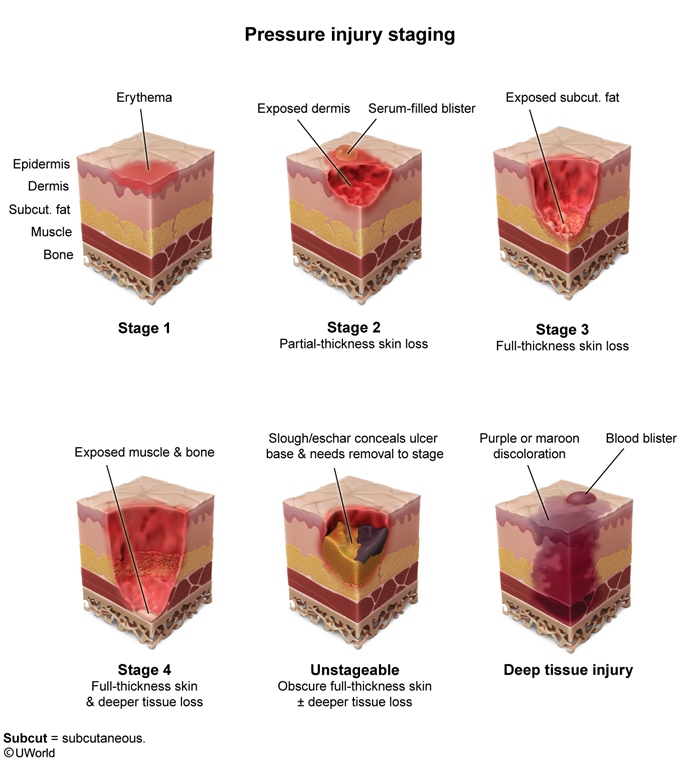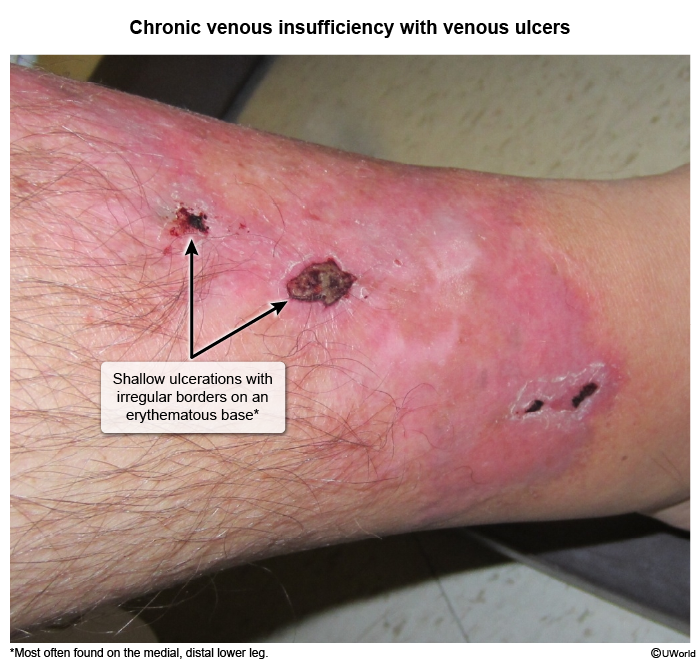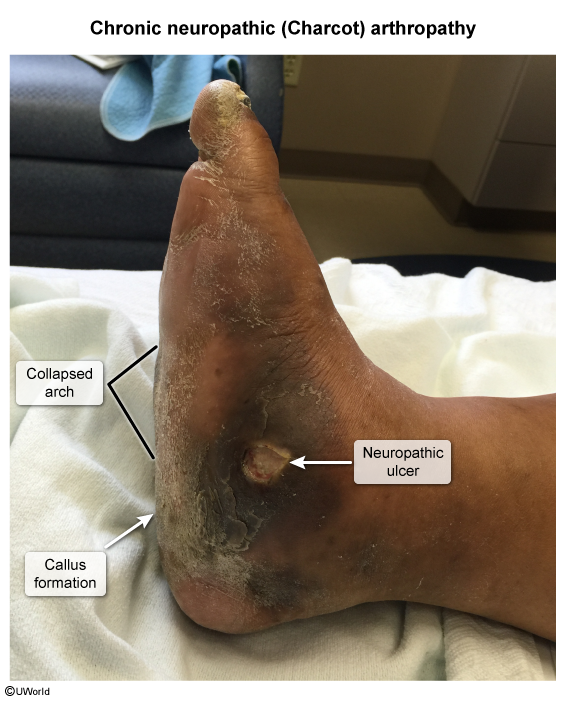Pressure Ulcers
Article Sections
Introduction
Pressure ulcers, or decubitus ulcers, are localized injuries to the skin and underlying tissues that develop due to prolonged, unrelieved pressure, which impairs capillary blood flow and results in ischemia, tissue necrosis, and ulceration. These wounds most commonly form over bony prominences (eg, sacrum, heels), particularly in patients who are immobile, malnourished, or critically ill. Pressure ulcers are classified into stages based on the depth and extent of tissue involvement.
Pathogenesis
Pressure ulcers develop through a multifactorial process due to stressors on the skin and underlying tissues. The primary contributing mechanisms include:
- Sustained pressure: When external pressure exceeds capillary perfusion pressure for a prolonged period, it compromises blood flow, leading to tissue ischemia, necrosis, and ultimately ulceration. Commonly affected sites include the sacrum, heels, occiput, and ischial tuberosities.
Continue Learning with UWorld
Get the full Pressure Ulcers article plus rich visuals, real-world cases, and in-depth insights from medical experts, all available through the UWorld Medical Library.
Figures

Images

